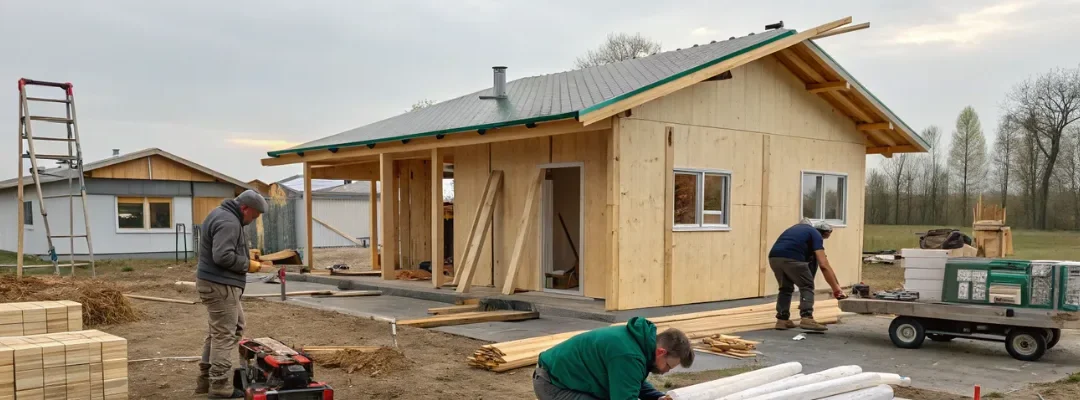Constructing a house is one of the biggest financial investments in life. But many homeowners face budget overruns because of poor planning, material wastage, or design changes mid-project. The good news? With the right approach, you can build a strong, durable home at a lower cost—without sacrificing quality.
Here are the top low-cost house construction tips to help you save money while ensuring safety and comfort.
1. Plan and Design Smartly
Good planning saves more money than cost-cutting during construction.
Tips:
- Keep the design simple and functional (avoid unnecessary curves, complex layouts, or extra rooms).
- Opt for standard sizes in doors, windows, and fittings to reduce customization costs.
- Work with an architect/engineer to avoid later modifications.
2. Choose Cost-Effective Building Materials
Material costs take up the largest share of your budget.
Tips:
- Use fly-ash bricks or hollow concrete blocks instead of traditional red bricks.
- Consider locally sourced materials to save on transportation costs.
- Reuse old materials like doors, windows, and tiles if possible.
- Go for prefabricated components for walls, slabs, and roofing.
3. Optimize Foundation Costs
The foundation is critical but also one of the costliest parts.
Tips:
- Avoid overdesigning—soil testing helps determine the right foundation type.
- For smaller homes, shallow foundations (strip, mat, or raft footing) are cost-effective.
- Don’t overspend on depth unless soil requires it.
4. Select the Right Construction Method
The building technique can impact labor and material usage.
Tips:
- Load-bearing structures are cheaper for single/double-story homes compared to RCC frame structures.
- Explore modular or prefabricated construction for speed and reduced costs.
- Use precast slabs and staircases to cut down time and expenses.
5. Hire the Right Contractor
Cheap labor isn’t always the best option—inexperienced contractors may cause errors that cost more to fix later.
Tips:
- Compare quotes but check quality of work and past projects.
- Sign a detailed contract with clear scope, materials, and timeline.
- Supervise work regularly to avoid wastage and rework.
6. Focus on Energy Efficiency
Energy-efficient homes save money in the long run.
Tips:
- Design for natural light and ventilation to cut down electricity bills.
- Use cool roof coatings, insulated walls, and energy-efficient windows.
- Install solar panels or rainwater harvesting systems if budget allows.
7. Buy Materials in Bulk
Bulk buying reduces costs if managed properly.
Tips:
- Purchase cement, steel, and tiles in bulk to get contractor discounts.
- Store materials carefully to prevent damage.
- Avoid over-purchasing to reduce waste.
8. Reuse and Recycle Materials
Sustainable construction also means budget-friendly construction.
Examples:
- Use construction debris (broken tiles, stones, concrete) for landscaping or backfilling.
- Reclaimed wood can be used for furniture or doors.
- Recycled steel is cheaper and durable.
9. Reduce Finishing Costs
Finishes like flooring, painting, and interiors can add a big chunk to your budget.
Tips:
- Opt for simple flooring (cement, vitrified tiles) instead of marble/granite.
- Choose textured plaster walls instead of expensive cladding.
- Use basic but durable paint and upgrade later when budget allows.
Quick Recap: Cost-Saving Strategies
| Area | Cost-Saving Tip |
|---|---|
| Design & Layout | Keep it simple, avoid over-design |
| Materials | Use local, recycled, or prefabricated options |
| Foundation | Choose shallow foundation if soil allows |
| Contractor | Hire skilled, reliable team |
| Energy Efficiency | Use natural light, ventilation, solar options |
| Finishing | Stick to simple, durable finishes |
FAQs
Q: Can I build a house with a limited budget without compromising safety?
A: Yes. With proper planning, soil testing, and material selection, you can build a safe and durable home at low cost.
Q: Is prefabricated construction cheaper than traditional methods?
A: In many cases, yes—it reduces labor and time costs, though transport of prefabricated units may add expenses.
Q: Which is cheaper: RCC frame structure or load-bearing?
A: For single or double-story houses, load-bearing walls are cheaper. For taller buildings, RCC frames are necessary.

